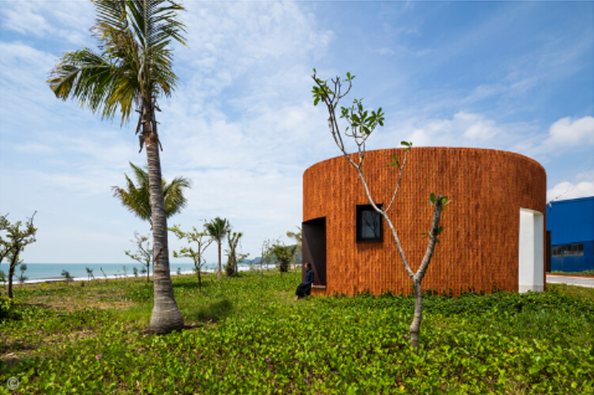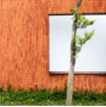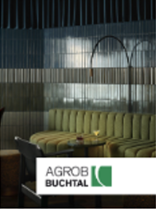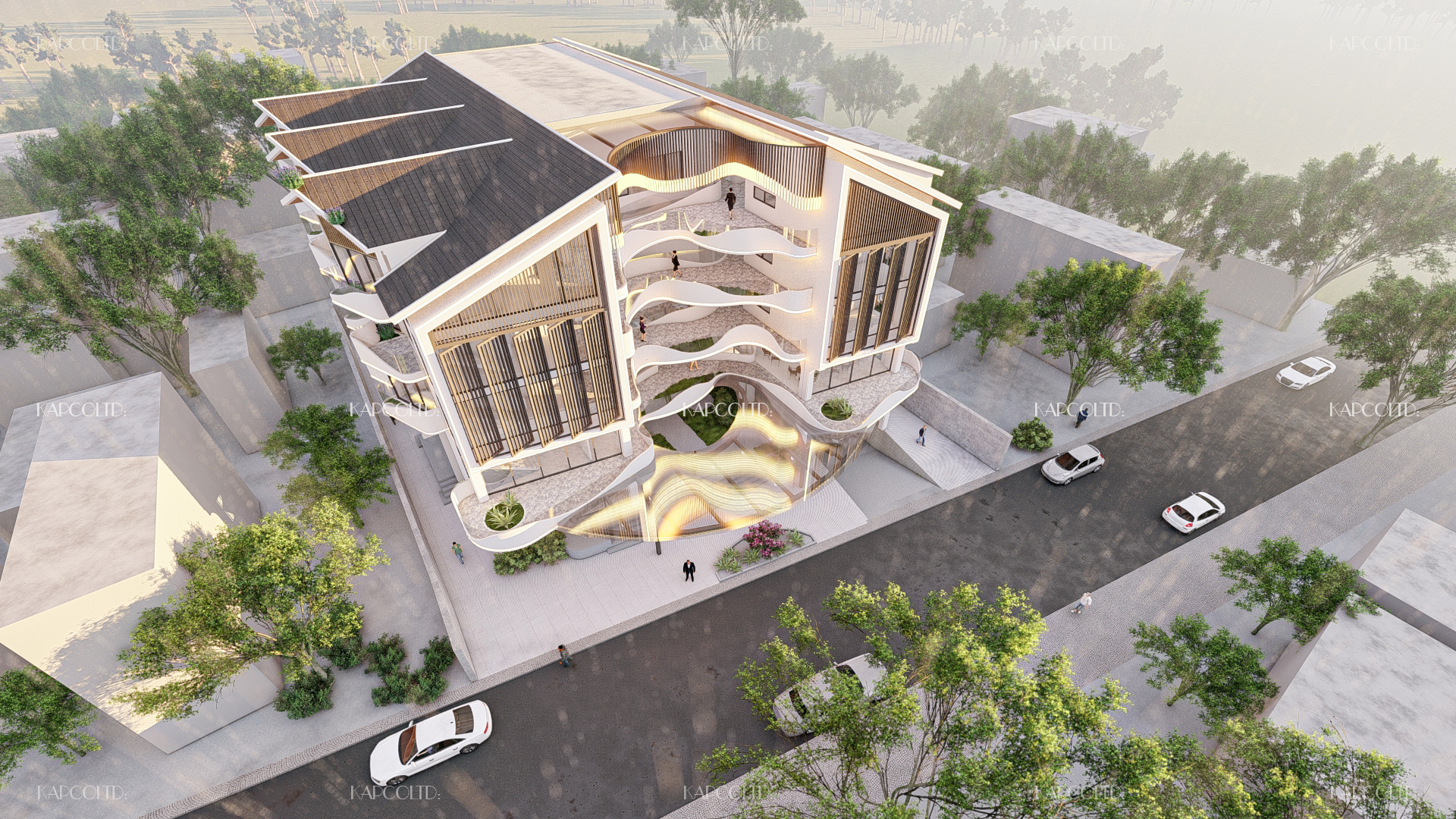Text description provided by the architects. The Gamelle is a small laboratory for product inspection in a factory in central Vietnam. Located by the sea at the edge of the site, the building aims to provide views of nature while protecting it from excessive exposure to the sea breeze. An outer wall encloses both functional rooms and exterior spaces, constituting a porous structure to mediate between the internal and external environment. The project has the ambiguity of the entity: eye-catching like a solid pavilion, and yet eye-penetrating to the scenery beyond with its transparency.

A bean-shaped wall envelops the building protecting it against sea wind and sand. Its closed curve clearly defines a boundary between the inside and out, with a single concave surface facing the coast and the interior space oriented towards the open sea. The outside of the envelope is clad with halved locally sourced brick that gives a particular pattern as well as provides durable skin against the salty wind. Its rugged texture allows a climber to scale the building.




The plan within the envelope is divided by six lines perpendicular to the coastline, forming parallel rooms extending along the sea–factory axis. An office is placed next to the entrance, followed by a group of inspection rooms. A courtyard is placed on one side of each main room, working as a double skin that softens the interface with the outside. Arranged alternately on the sea and factory sides, these courtyards enhance cross-ventilation throughout the building.



Openings of various sizes and forms are placed along the envelope. Depending on the exterior viewpoint, these openings aggregate and segregate, penetrating and blocking views toward the scenery on the opposite side. While the glazed openings expose the activity inside, unglazed openings reveal courtyards that create visual ambiguity of the building. A row of palm trees traverses the courtyards, giving the building’s solid volume a fragmentary transparency.

















Đánh giá
Chưa có đánh giá nào.